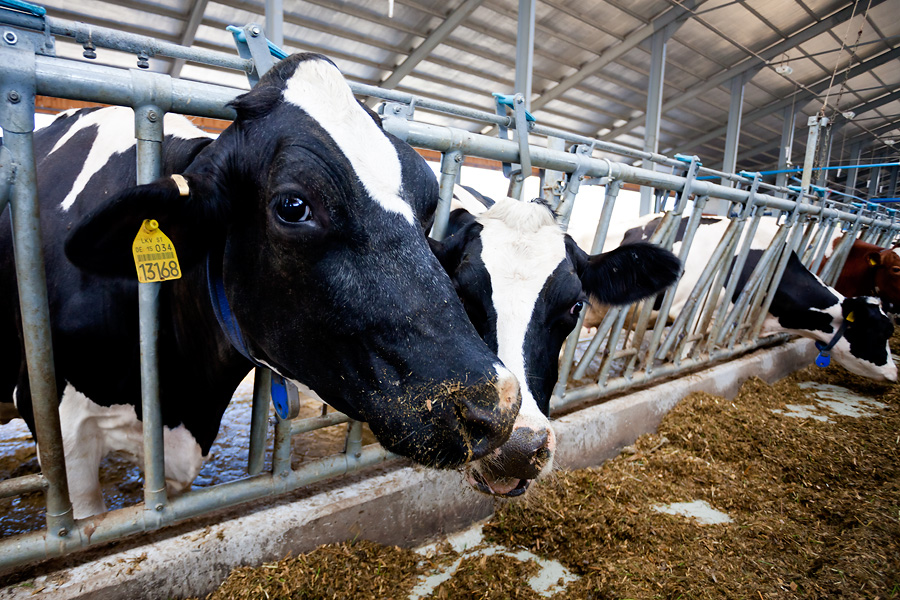Coronavirus package allots $13 billion for crop and livestock producers

Lawmakers combined the coronavirus bill with legislation to fund the government through the Sept. 30 end of the current fiscal year.
Row crop farmers would see payments of $20 an acre and livestock producers would be compensated for animals culled during the pandemic under the $900 billion coronavirus relief bill that was unexpectedly challenged by President Trump on Tuesday, a day after Congress passed it. The bill provides $13 billion for agriculture, to be distributed through initiatives that include a $400 million dairy donation program, aid to contract poultry growers, and assistance for textile mills and, potentially, ethanol refineries.
The agricultural provisions were far more detailed than in previous aid packages — which gave Agriculture Secretary Sonny Perdue great leeway in distributing aid — and directed aid to producers and processors who were yet to receive assistance. “The effects of this pandemic are still being seen all along the food supply chain,” said House Agriculture chairman Collin Peterson.
President-elect Joe Biden said on Tuesday that he would propose additional coronavirus aid after he takes office on Jan. 20. “Congress did its job this week. I can and I must ask them to do it again next year,” Biden said during a speech in Wilmington, during which he also warned, “Our darkest days in this battle against COVID are ahead of us, not behind us.”
Lawmakers combined the coronavirus bill with legislation to fund the government through the Sept. 30 end of the current fiscal year.
In a four-minute video on social media, Trump asked Congress to amend the bill to provide larger stimulus payments to individuals and to “get rid of the wasteful and unnecessary items … or else the next administration will have to deliver a COVID relief package.” Many of his complaints were directed toward the government-funding portion of the bill. His list of examples included $3 million for poultry production technology.
Of the $13 billion for agriculture, an estimated $5 billion would be spent on the $20-an-acre payments for row crops. Corn farmers would get $1.8 billion of the aid, followed by soybean growers ($1.7 billion), wheat growers ($890 million), and cotton growers ($240 million), calculated American Farm Bureau Federation economists. Specialty crop growers would receive up to $225 million if they lost a crop in 2019.
Up to $1 billion would go to contract growers of livestock and poultry, to cover up to 80% of income lost due to the pandemic. Growers suffered when processors reduced production. The USDA would also be authorized to compensate producers for up to 80% of the value of poultry and livestock that were culled because of backups at slaughter plants due to coronavirus outbreaks among workers.
Cattle producers would be eligible for supplemental coronavirus payments. The AFBF said the “plus-up” payments would range from $63 per head for slaughter cattle to $7 per head for feeder cattle weighing less than 600 pounds.
Michigan Sen. Debbie Stabenow, ranking Democrat on the Senate Agriculture Committee, said that up to $3 billion could be spent on the payments to contract producers, the “plus-up” payments on cattle, and compensation for “depopulated animals.”
Some $60 million was earmarked for grants to small meat and poultry processors so they could upgrade their facilities, qualify for federal inspection, and sell their products across state lines. “Local meat processors across the country continue to be severely backlogged due to COVID-19,” said the National Cattlemen’s Beef Association, one of many groups supporting the expansion of local processing capacity. The grant program is similar to the so-called RAMP UP bill designed to help local processors expand their markets.
Under another of the bill’s provisions, the USDA would spend $400 million to buy milk for processing into dairy products that would then be donated to food banks and other charities. Dairy producers would also be eligible for payments, estimated at up to $470 million, through a supplemental version of the Dairy Margin Coverage subsidy. Payments would be based on 75% of milk production in 2019 that exceeded the volume already covered by the DMC. The supplemental aid is targeted toward small and medium-size dairy farms and would be available through 2023, said the National Milk Producers Federation.
U.S.-based textile mills would qualify for payments to offset the reduction in sales because of the coronavirus. Payments would be set at 6¢ per pound of cotton used.
Producers of biofuels, from corn ethanol and biodiesel to cleaner-burning “advanced” biofuels, are eligible for payments under the legislation, although the USDA is not required to assist them. The Renewable Fuels Association, a trade group, said the bill provided “decisive direction” to Perdue, who has questioned whether he has the authority to aid a processor rather than a producer.
“More than half of the ethanol industry shut down during the extraordinary demand collapse in the spring, and producers across the country still have not fully recovered from that market shock,” said Geoff Cooper, the RMA’s chief executive. Ethanol production is running 2 billion gallons lower than usual.
Read also
Wheat in Southern Brazil Impacted by Dry Weather and Frosts
Oilseed Industry. Leaders and Strategies in the Times of a Great Change
Black Sea & Danube Region: Oilseed and Vegoil Markets Within Ongoing Transfor...
Serbia. The drought will cause extremely high losses for farmers this year
2023/24 Safrinha Corn in Brazil 91% Harvested
Write to us
Our manager will contact you soon



